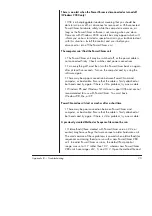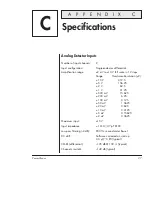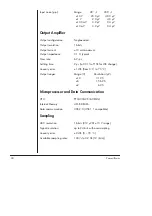
Chapter 2 — Setting Up
13
or single-sided (+ and COM or ground) outputs from the detectors can
be used. It is often worth using the + and – terminals even with a single-
ended detector signal as this may give a better quality signal. Some
detectors may make use of all three (+, –, and COM) sockets.
In general, for best results, use a twisted-pair cable, with a braided
shield. The shield can be connected to a COM pin of the PowerChrom
unit,
, or to a ground connection on the detector, but not to
both!
If your detector provides signal outputs at different levels (for example a
10 mV ‘integrator’ output, and a 1 V ‘recorder’ output) use the larger
output (in this example the 1 V recorder output would be used). The
larger signal will usually exhibit a better signal to noise ratio. You can
adjust the input sensitivity of the PowerChrom hardware unit to match
the output of your detectors, see the Input Amplifier section in the
PowerChrom Software Manual
.
If an incorrect polarity connection is made the signal will be inverted
(that is, the peaks will be pointing downwards instead of upwards).
How Does it Work?
The PowerChrom unit contains its own microprocessor, memory, and
specialized analog amplifiers for signal conditioning. The block
diagram in
shows its basic elements.
All sampling, output, and communications is controlled by an internal
PowerPC 403 microprocessor running at 60 MHz. The microprocessor
has access to 4 megabytes of RAM for data storage and buffering prior
to transmission to the computer. The recording unit uses USB (Universal
Serial Bus) to transfer recorded data to the computer, and for the
computer to control the PowerChrom unit.
The PowerChrom unit has two input channels, with separate amplifiers,
used to record analog signals (more detail is given on
outputs of these amplifiers are multiplexed to a precision 16-bit analog-
to-digital convertor. This ADC samples at rate of 10 kHz. The
PowerChrom software maximum recording rate is 100 Hz, the extra
capacity of the ADC is used to average individual samples to produce
higher resolution data, see
















































